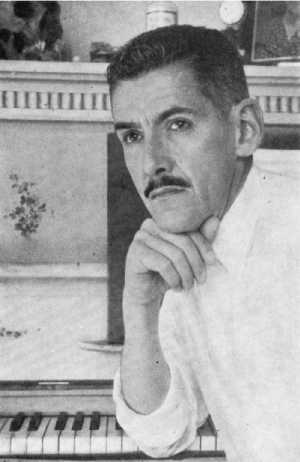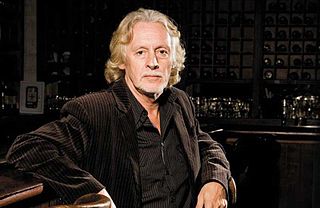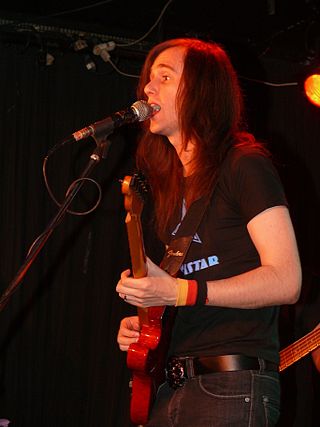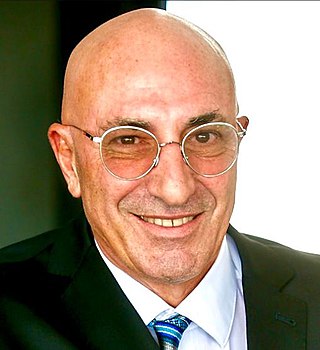
Astor Pantaleón Piazzolla was an Argentine tango composer, bandoneon player, and arranger. His works revolutionized the traditional tango into a new style termed nuevo tango, incorporating elements from jazz and classical music. A virtuoso bandoneonist, he regularly performed his own compositions with a variety of ensembles. In 1992, American music critic Stephen Holden described Piazzolla as "the world's foremost composer of Tango music".

Carlos Guastavino was an Argentine composer, considered one of the foremost composers of his country. His production amounted to over 500 works, most of them songs for piano and voice, many still unpublished. His style was quite conservative, always tonal and lushly romantic. His compositions were clearly influenced by Argentine folk music. His reputation was based almost entirely on his songs, and Guastavino has sometimes been called "the Schubert of the Pampas". Some of his songs, for example Pueblito, mi pueblo, La rosa y el sauce and Se equivocó la paloma, became national favorites. Unlike most other composers, at any time or place, Guastavino earned enough from his royalties and performing rights that he had little need for other income.

Oscar Marcelo Alemán was an Argentine jazz multi instrumentalist, guitarist, singer, and dancer.

Leo Maslíah is a Uruguayan musician, humorist and writer.

Raúl Alberto Antonio Gieco, better known as León Gieco is an Argentine folk rock performer, composer and interpreter. He is known for mixing popular folkloric genres with Argentinian rock and roll, and lyrics with social and political connotations. This has led to him being called "The Argentine Bob Dylan".

Alfredo Juan Falú is an Argentine classical guitarist and composer.

Horacio Lavandera is an Argentine pianist, currently residing in Madrid, Spain. As its youngest competitor at the age of sixteen, he won the International Piano Competition Umberto Micheli, held at the Giuseppe Verdi Conservatoire and in Teatro alla Scala in Milan. He has been invited to perform as a soloist with prestigious orchestras, as well as to offer recitals in America, Europe, and Asia.
Jorge Cardoso [full name: Jorge Ruben Cardoso Krieger] is a classical guitarist, composer, researcher, medical doctor and teacher. He has performed in Europe, America, Asia and Africa, and has frequently participated in international festivals, conferences, seminars, radio and television.

Carlos Alberto Mestre mostly known by his stage name Nito Mestre, is an Argentine musician, founding member –along with Charly García– of Sui Generis, member of PorSuiGieco, bandleader of Nito Mestre y los Desconocidos de Siempre and a recording solo artist. Sui Generis, was initially formed in 1969 by Charly García, Nito Mestre, Rolando Fortich, Juan Belia (guitar), Alberto Rodriguez (drums) and Carlos Piegari (vocals). Later on, Sui Generis became a duo as everyone left except for García. After the band split in 1975, Nito Mestre formed a new band called "Nito Mestre y los Desconocidos de Siempre" with María Rosa Yorio on vocals, Rodolfo Gorosito on guitar, Alfredo Toth on bass, Ciro Fogliatta on keyboards and Juan Carlos "Mono" Fontana as a drummer. In the early 80s, Nito pursued a solo career.
Ignacio Varchausky is a double bass player, music producer and founder of Orquesta El Arranque (1996). He is also the creator and artistic director of Orquesta Escuela de Tango Emilio Balcarce.
Gran Orquesta TangoVia Buenos Aires is an orchestra made up by many of the most prominent musicians of the new generation of tango. Created by the non-profit organization TangoVia Buenos Aires in 2003, the orchestra's main goal is to celebrate the art of tango by means of special productions to recover forgotten repertoires or perform the works of new composers. The orchestra's first record, by the same name, published by Epsa Music, appeared in 2003, under the direction and arrangements of Nicolás Ledesma, Ramiro Gallo, Carlos Corrales and Andrés Linetzky. That same year - following an introductory concert at the Tango Festival in Buenos Aires, Argentina - the orchestra took part in the second edition of the Festival Buenos Aires Tango in Paris, performing a series of concerts in the Théâtre National de Chaillot. On that occasion the orchestra was directed by Cristian Zárate, the maestros Víctor Lavallén, Julio Pane, Emilio Balcarce, with invited singers Rubén Juárez and Guillermo Fernández.

Eduardo Falú was an Argentine folk music guitarist and composer.

Sebastian Schneider is a German Argentine guitar player, multi-instrumentalist, singer-songwriter and music producer. He began his career in the Argentine and Latin American rock scene playing in several rock bands and later began his solo career in 2004.

Xavier Moyano is an Argentine musician; producer, performer, composer, and educator. He began his career as a session guitarist in Tucuman in 1999. By 2003 was the guitarist for rock/pop band "AVe Cesar" until 2008, after that he became a solo rock instrumentalist. Between 2009 and 2011 he was guitarist and composer of metal band "Seliger" (Argentina/Brasil), between 2014 and 2019 he was guitarist and producer of "Cossas Novas", since 2018 he is guitarist and co-producer of "Rock Bro's" (ClassicRock). He is currently a solo guitarist, session musician and producer.
Fernando Egozcue is an Argentinian guitarist and composer.

Oscar Emilio Tirao, known as Cacho Tirao, was an Argentine guitarist. He was a member of the Astor Piazzolla quintet.
Mario Parmisano, is an Argentinian jazz pianist. He is recognized on the international scene for his work with guitarist Al Di Meola and for his Tango Jazz Trio, performing a unique interpretation about the Music of the Great Tango Master Astor Piazzolla.

Juan Manuel Abras Contel is a classical music composer, conductor, musicologist and historian from Sweden. Born in Stockholm to a European family that moved around the world, Abras became a cosmopolitan artist and scientist.

Jose Manuel "Anel" Paz is an Argentinian guitarist, singer, songwriter, producer, and recording and mix engineer.
He has been a member of Los Violadores, and Los Politicos.

Daniel Doura is an Argentine composer of classical music. Considered one of the Argentine composers who currently have international exposure, Doura is a graduate of the Boston Conservatory, the Massachusetts Institute of Technology and the University of Columbia, and among his teachers were John Cage, Mario Davidovsky, Chou Wen-chung, Alberto Ginastera, Luciano Berio, Tōru Takemitsu, Milton Babbitt and John Adams, among others. He received the Best Composition award from the American Society of Composers, Authors and Publishers (ASCAP) in 1985 and was a finalist for the Best Composition award from the American Academy of Arts and Sciences (AAA&S).















